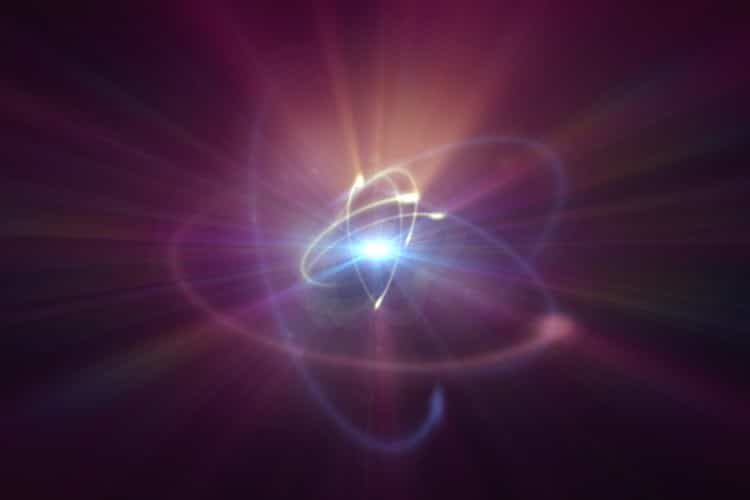
The U.S. Department of Energy (DOE) and the DOE’s National Nuclear Security Administration (NNSA) announced on Tuesday that scientists at the Lawrence Livermore National Lab (LLNL) in California achieved a net energy gain in a fusion experiment using lasers, a major breakthrough in the decades-long quest to harness the process that powers the sun.
The success of this experiment holds promise that one day in the not-so-distant future this technology, if harnessed, could produce nearly limitless, carbon-free energy, supplying greatly needed electricity. During the experiment, scientists focused a laser on a target of fuel to fuse two light atoms into a denser one, reaching their target by releasing what is known as a net energy gain. The result has been elusive for decades because fusion happens at such high temperatures and pressures that it is incredibly difficult to control.
“We have had a theoretical understanding of fusion for over a century, but the journey from knowing to doing can be long and arduous. Today’s milestone shows what we can do with perseverance,” said Dr. Arati Prabhakar, the president’s chief advisor for science and technology and director of the White House Office of Science and Technology Policy, at a DOE press conference.
So, what exactly is nuclear fusion? According to International Atomic Energy Agency (IAEA), “nuclear fusion is the process by which two light atomic nuclei combine to form a single heavier one while releasing massive amounts of energy.”
“Fusion reactions take place in a state of matter called plasma — a hot, charged gas made of positive ions and free-moving electrons with unique properties distinct from solids, liquids or gases. The sun, along with all other stars, is powered by this reaction.”
Nuclear fusion differs from nuclear fission, the process used in nuclear power plants. Fission splits atoms, rather than combines them, generating dangerous radioactive waste in the process. Thus, nuclear fusion is far more efficient, generates almost no waste, and runs off hydrogen atoms readily available in seawater, rather than radioactive materials buried in the ground. All of this makes nuclear fusion nearly ideal, if we can effectively harness this energy source, for powering everything from houses to industrial plants.
Celebrating the fusion experiment success, LLNL Director Dr. Kim Budil said, “The pursuit of fusion ignition in the laboratory is one of the most significant scientific challenges ever tackled by humanity, and achieving it is a triumph of science, engineering, and most of all, people.” Budil added, “Crossing this threshold is the vision that has driven 60 years of dedicated pursuit — a continual process of learning, building, expanding knowledge and capability, and then finding ways to overcome the new challenges that emerged. These are the problems that the U.S. national laboratories were created to solve.”
With the nuclear fusion breakthrough came the typical leftist “green energy” agenda comments you would expect, with U.S. Secretary of Energy Jennifer Granholm saying, “The Biden-Harris Administration is committed to supporting our world-class scientists — like the team at NIF — whose work will help us solve humanity’s most complex and pressing problems, like providing clean power to combat climate change and maintaining a nuclear deterrent without nuclear testing.”
“This astonishing scientific advance puts us on the precipice of a future no longer reliant on fossil fuels but instead powered by new clean fusion energy,” Senate Majority Leader Chuck Schumer (D-N.Y.) said.
It may be some time before commercial production of energy from nuclear fusion becomes a reality, however. Reuters shared, “Tony Roulstone, a nuclear energy expert at the University of Cambridge, estimated that the energy output of the experiment was only 0.5% of the energy that was needed to fire the lasers in the first place.”
“Therefore, we can say that this result … is a success of the science — but still a long way from providing useful, abundant, clean energy,” Roulstone said. In order to become commercial, a power plant would have to produce enough energy to power the lasers and to achieve ignition continuously.”
Knowing that this is just the beginning of nuclear fusion as a reliable energy source, the needs to produce clean energy now via other sources such as solar and wind is still being pursued by energy providers. And those “clean energy” industries are enjoying massive subsides that our government has thrown their way all in the name of saving the world from alleged man-made climate change.
The experiment did shine a light on some politicians such as Schumer, who seem to be supportive of advancing the new technology, when he said, “I’m also proud to announce today that I’ve helped to secure the highest ever authorization of over $624 million this year in the National Defense Authorization Act for the ICF program to build on this amazing breakthrough.”
Harnessing the sun and providing limitless power is finally in our reach. We can now only hope for continued success in developing nuclear fusion as a reliable energy source, with government allowing the private sector to work with the DOE in creating an industry harnessing this new and exciting energy source that will benefit us all.

